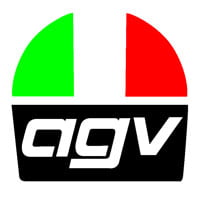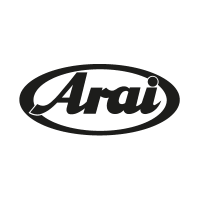Which motorbike helmet brand have the safest helmets?
Like every year, the motorcycle helmet firm SHARP exposes on its website the data from the tests of protective helmets to discover which helmet brands are the ones you can trust, the ones that will provide you with the best protection in the event of an accident.
As we know only SHARP provide comparative scores so we can see how well the helmets perform against each other. So that’s what we use. Sure it’s not perfect as some brands are excluded (you can read more in the methodology section at the bottom), but it’s the best information we can get to research data before buying a shiny new helmet in 2022.

With that said, these are the Top 10 motorcycle helmet brands, using updated data from 2016-22 and showing which are the safest crash helmet brands. If you’re looking for a new helmet and don’t have time to read our reviews, you may want to consider one of these brands.
![]()
Top 1: AGV

Italian helmet maker AGV rose to the top spot last year and stays there for 2022. AGV has been making very fine helmets since 1947 and, of course, they’re known for be-lidding the hallowed head of Valentino himself. Now owned by Dainese, of 6 helmets tested since 2016, three scored maximum 5 stars (Corsa R, Pista GP-R and Veloce S) and the rest were four stars, showing you really can trust an AGV. Wowzers – incredible job AGV. You can find our AGV helmet reviews here.
Top 2: Shoei

Shoei are known for producing more expensive, well-built helmets at the top end of the market. All of which shows in their amazing ranking in our safety review. Across all 14 Shoei helmets tested ever, they’ve scored an average of 4.14/5 and of their most recently tested helmets, both the X-Spirit III and Ryd scored maximums (overall they’ve scored 4.4/5 since 2016). A massive Well Done Shoei! Check out our Shoei helmet reviews here.
Top 3: Shark

At 3 is quality French maker, Shark Helmets. They’ve had 10 helmets tested by SHARP in the last six years with an average score of 4 stars. Which is no surprise because whatever the style of helmet and whatever it’s been made of, every helmet tested by SHARP scored 4 stars, which is an awesome performance (plus the chin bars on both modulars (including the Evo-One 2) scored 100% – which is a real rarity). All in all an amazing job from the French helmet masters. Click this link to check out all our Shark helmet reviews.
No.4 Arai

Up a position from last year, Arai’s been let down by the (relatively) lowly three stars scored by the Renegade V and the (now replaced) Axces III in recent years, though the 4 star rated Profile V helped them restore their reputation a little in 2021. It’s a shame because they were on a great run – with both the QV Pro and RX-7v scoring maximum 5 stars for safety in recent times. Check out our latest Arai reviews here.
No.5 Caberg

Caberg might be in in 5th position in 2022, but it’s actually more of a joint 3rd because, just like Arai and Shark, all their helmets tested since 2016 scored an average of 4 stars out of five (it’s only because more Sharks and Arais have been tested that they’re higher in the list).Other than that, it’s another excellent performance from Italian maker Caberg, with the 5 star rating of the Duke II really helping out their cause. In fact, across all 16 Cabergs tested since SHARP began, their average is a fantastic 4.3 stars. Immense. And really goes to show how you can generally trust a Caberg helmet. Find all our Caberg helmet reviews here.
No.6 Nolan

In sixth place is the daddy of the Nolan group brands. Every single one of the 14 tested Nolan helmets has scored 4/5 stars in the SHARP safety test. Just Wow. What’s also notable is that each of their tested flip-up helmets scored 100% when it came to keeping their chin bar fully locked – which really isn’t easy to do. That’s a real testament to their design, manufacturing and quality control excellence. For all our Nolan helmet articles, look here.
No.7 HJC

HJC are in our top 10 for the fourth year, though in 2022 they slide down a few places to 7th. Still, it’s a great showing, particularly because HJC specialises in lower priced helmets – so you don’t have to max out your credit card for great protection. They hit this spot partly because of old favourites like the five star rated HJC FG-ST and partly because their newer C70 polycarbonate lid hit a five star safety rating too. Overall, their 10 most recently tested helmets scored 3.3/5 SHARP stars with their lowest scoring helmets being 3 star rated. Click to check all our HJC helmet reviews.
No.8 MT

Scoring higher than many of the big boys (we’re looking at you Schuberth and Scorpion!) budget Spanish lid maker MT nudges up to No.8 for 2022. Of their eight recently tested helmets, one scored a maximum 5/5 stars, four scored 4/5 and three 3/5 putting them in a very healthy position. That’s particularly incredible when you realise the average price of those tested MT helmets is just a smidge over £100! Top job MT. Check out our MT reviews here.
No.9 Bell

At No.9, Bell are still doing well, though their three star Bell Qualifier DLX MIPS and Bell RS2 has spoiled their party a bit, meaning they’ve slipped down from 4th place a few years ago. Having said that, Bell has scored a massive 4.3/5 across all 15 tested helmets over the years, which is one of the highest ratings of any helmet brand we’ve seen. But because we weight recent reviews more heavily, it’s enough to push Bell down the rankings a few places. As always, you can read all our Bell helmet reviews here.
No.10 Airoh

Another Italian brand pops back into our top 10 for 2022. Airoh has had 5 helmets tested over recent years, scoring an average of 3.7/5 stars, with their 5 star rated polycarbonate Valor full face really helping their cause – though none of their helmets have dropped below 3 stars since our 2016 cut-off. Well done Airoh, and here’s to you climbing our top ten over the coming years.
So that’s our best helmet brands for UK ECE tested helmets 2022. Read on to find out why our chart simply provides a snapshot using publicly available data to give helmet buyers a way to quickly find safety tested helmets, and why it can’t be comprehensive and give equal covering to all helmet brands.
Sharp methodology for test motorcycle helmts
Any chart/study like this has it’s drawbacks of course, but hopefully it’s a pretty good snapshot of how safe some of the main helmet brands will perform in an accident, relative to each other.
This table relies on SHARP crash helmet testing data only (covering 2016 to 2022) so it’s never going to be fully comprehensive. And we’ve not included every helmet brand in the list. There’s a few reasons for this. Maybe they’ve not been tested enough to give a reasonably reliable amount of data – or maybe they’ve not been tested at all. Or maybe they’ve so little distribution, that we’ve chosen to leave a brand out. We’ve tended to focus on the main brands – meaning brands that are more widely known and which helmet buyers will want to know about and be able to find in motorbike shops.
Our main drawback is the limited number of helmets tested for some brands which will slant the figures – SHARP choose and buy the helmets themselves, so that’s bound to skew the figures. If a brand’s helmets haven’t been chosen for testing, then they simply won’t appear in our table.
As alluded to above, to avoid sample size skewing, we’ve excluded some brands where a brand hasn’t had a reasonable tested sample size. Why? Well, imagine one brand has 10 helmets tested with an average score of 3 stars, they could be below a brand with just one helmet scoring 4. So because of this, where there’s only a handful of helmets available to score, we’ve usually removed the brand from the survey.
And of course, SHARP only tests ECE helmets bought in the UK, which may be different from helmets found in DOT or other areas.
It’s worth pointing out that there are some detractors of the SHARP test too, reckoning that it’s not real world enough. Which may or may not be true. However, we think it’s about as good as it gets – you can read what the test entails here and an analysis of SHARP data here and make your own mind up if you like.
Whatever your point of view, what is going for the SHARP testing regime is that it’s held under controlled circumstances in a laboratory so each helmet should be subject to an identical test – meaning it’s possible to compare the results of each test on each helmet. Yes, agreed, it might not fully simulate the accident where you hit diesel while hanging off your Z1000 and bash your helmet on a curbstone at a 15 degree angle then scrail it down the road for 100 yards, but it does subject the helmet to impacts from multiple sides and show which individual helmets – all things being equal – perform best. So, we reckon it’s about as good information as is available and that’s what we’re basing this analysis on.
The scoring is simple. Where a helmet was awarded five stars, we’ve given it 5 points. Where it scored one star we’ve given it 1 point. We then add up the total number of points and divide it by the number of helmets tested over the last few years to find the average (mean). We then ordered the list, putting the highest scoring first. In the event of a tie-break, we also looked at helmet scores since testing began and took them into account.
